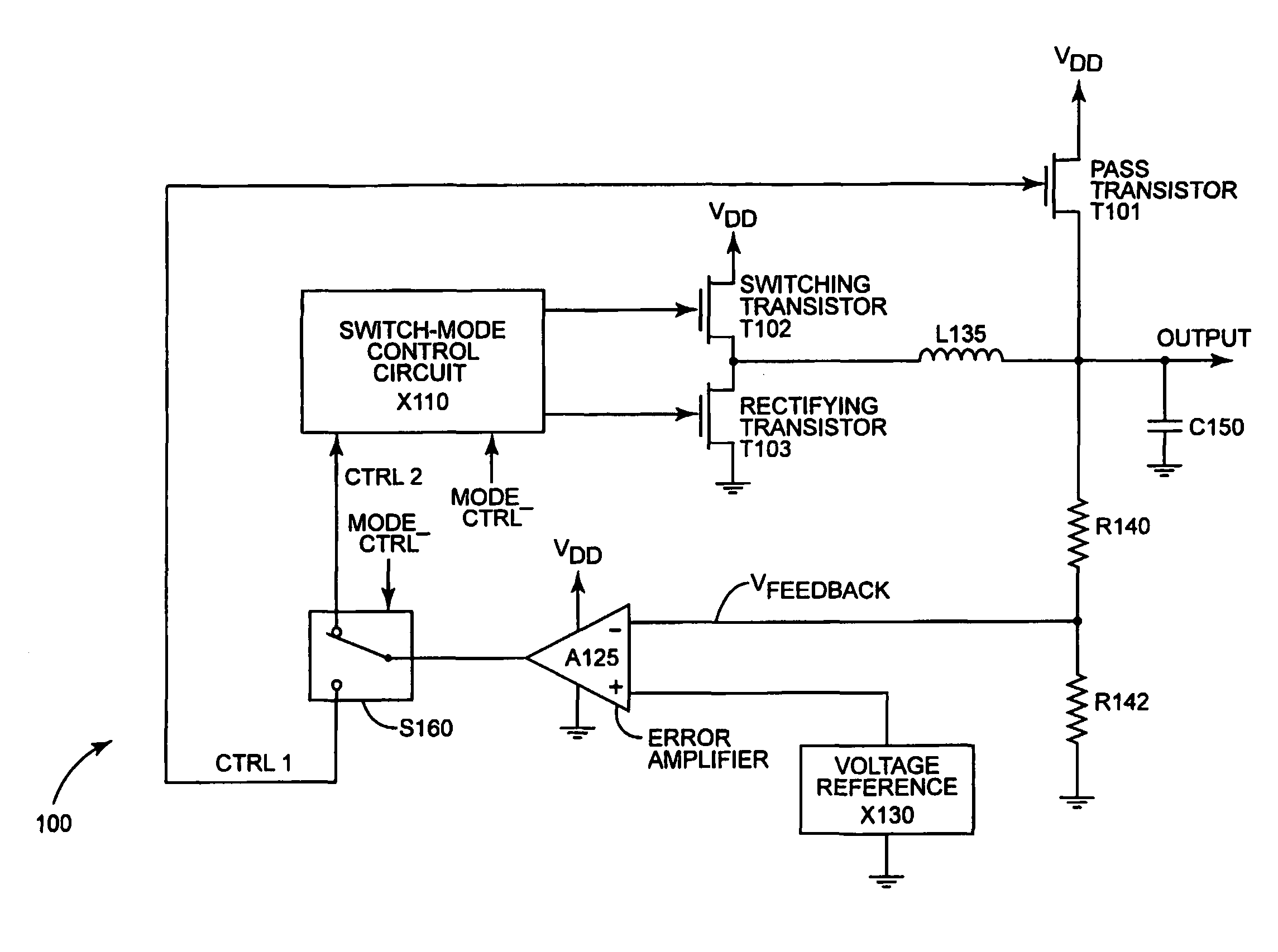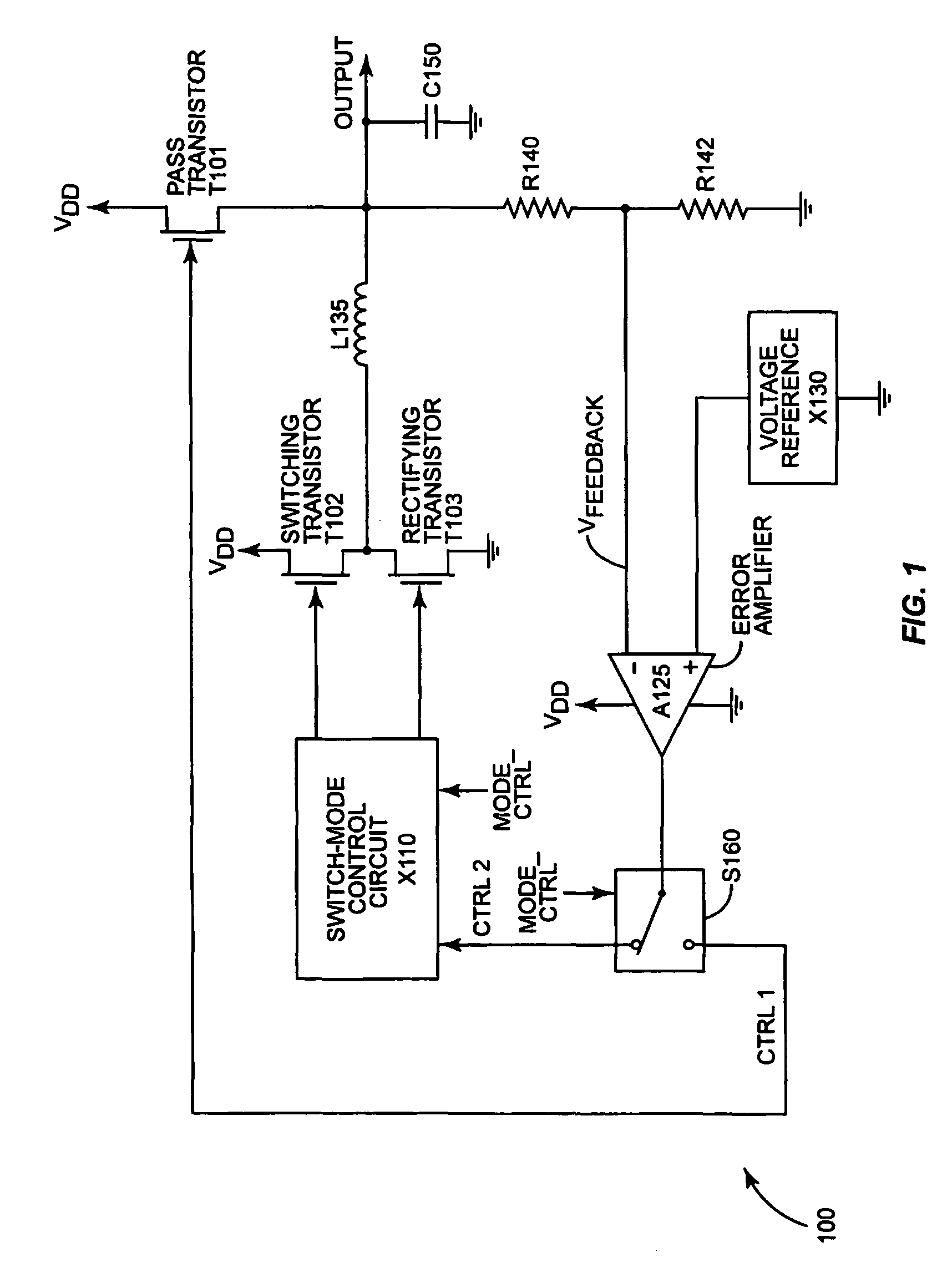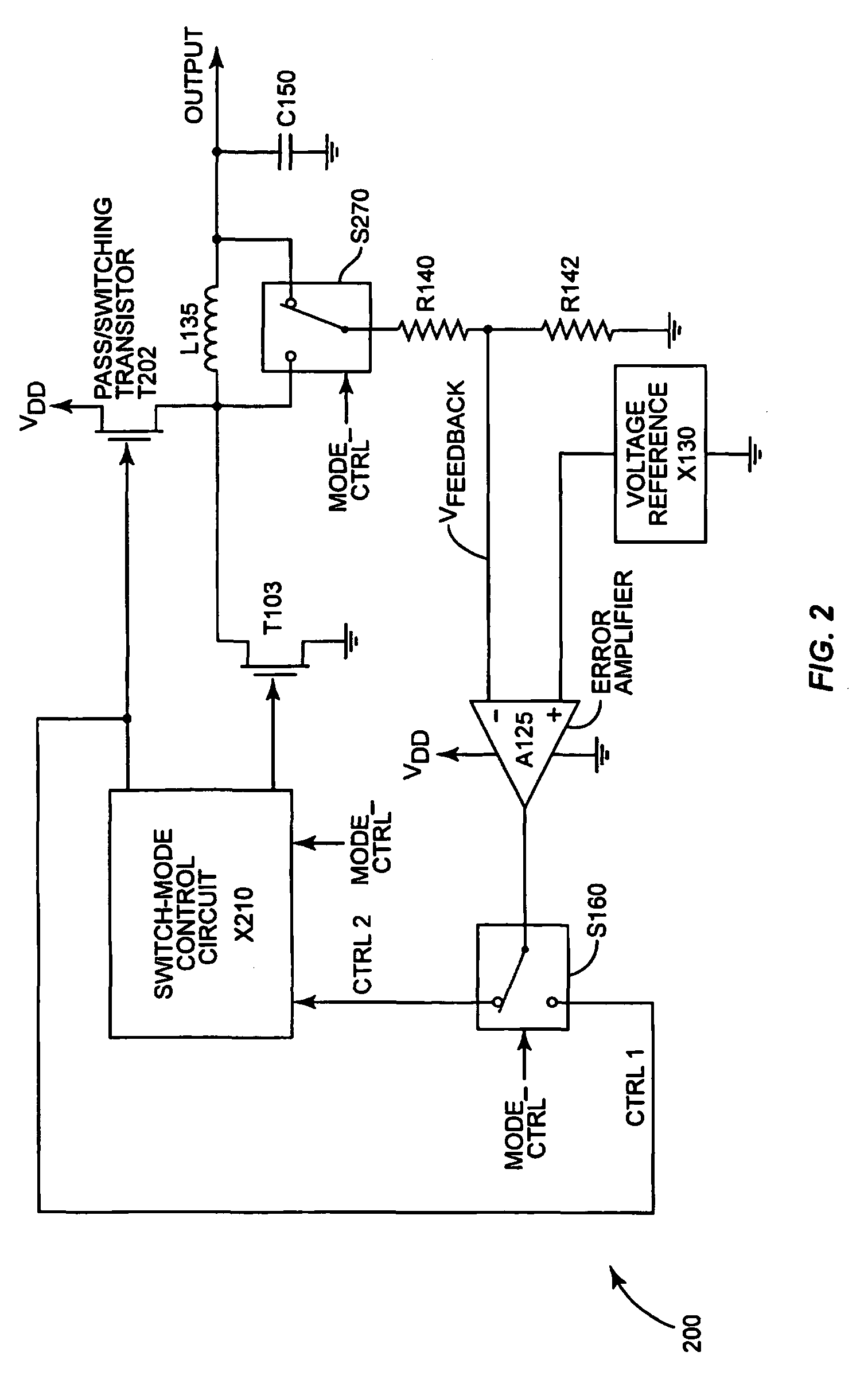Multimode voltage regulator circuit
- Summary
- Abstract
- Description
- Claims
- Application Information
AI Technical Summary
Benefits of technology
Problems solved by technology
Method used
Image
Examples
Embodiment Construction
FIG. 1 illustrates an exemplary multimode voltage regulator circuit 100 according to some embodiments of the present invention. Multimode voltage regulator circuit 100 includes a linear regulator sub-circuit, which comprises pass transistor T101, configured to supply current from supply VDD to a load (at “OUTPUT”), under the control of a control signal CTRL1. As is well known to those skilled in the art, pass transistor T101 can be operated in its linear (or “ohmic”) region as a variable-resistance device, thus effectively creating a voltage divider between the supply voltage VDD and ground, through the load. If the control signal CTRL1 is an error signal derived by comparing the output voltage to a reference voltage, as shown in FIG. 1, then the resistance of pass transistor T101 is continuously adjusted to maintain a substantially constant voltage at the load, despite changes in the load's current requirements or changes in the supply voltage VDD. Capacitor C150, which in some emb...
PUM
 Login to View More
Login to View More Abstract
Description
Claims
Application Information
 Login to View More
Login to View More - R&D
- Intellectual Property
- Life Sciences
- Materials
- Tech Scout
- Unparalleled Data Quality
- Higher Quality Content
- 60% Fewer Hallucinations
Browse by: Latest US Patents, China's latest patents, Technical Efficacy Thesaurus, Application Domain, Technology Topic, Popular Technical Reports.
© 2025 PatSnap. All rights reserved.Legal|Privacy policy|Modern Slavery Act Transparency Statement|Sitemap|About US| Contact US: help@patsnap.com



